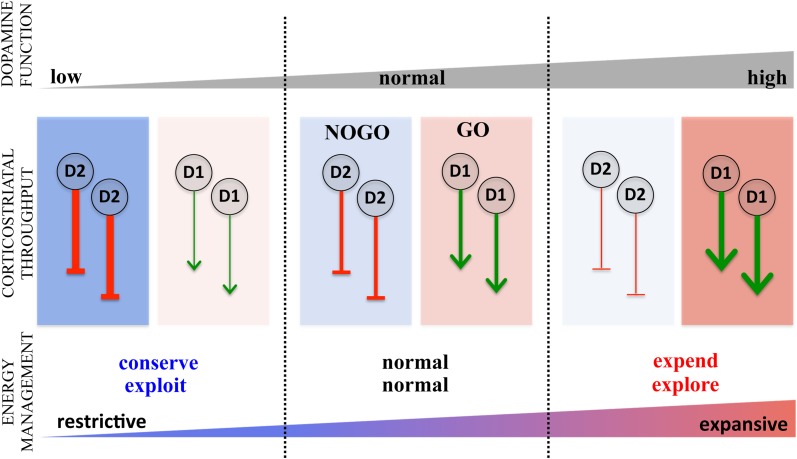Figure 2.
Role of direct and indirect pathway modulation of corticostriatal throughput in regulating the energy expenditure. The striatum modulates cortical processing via corticostriatal-thalamocortical loops through the basal gangia through two pathways, the direct, nigrostriatal (“GO”) and the indirect, striatopallidal (“NOGO”), expressing predominantly D1 and D2 dopamine receptors, respectively. Acting on D1 in the GO pathway (red toned boxes), dopamine disinhibits corticostriatal throughput facilitating activity while dopamine activation of D2 inhibits the NOGO pathway (blue toned boxes), also facilitating activity by dampening the inhibitory influence of the indirect. Conversely, decreases in dopamine diminish D1 mediated disinhibition of the GO pathway and D2 mediated inhibition of the NOGO pathway, both serving to restrict corticostriatal throughput. These dopamine effects are represented by green arrows for the GO pathways, indicating facilitation of corticostriatal throughput and red stop arrows for the NOGO pathway indicating inhibition of corticostriatal throughput. The consequences of increased and decreased dopamine on the expenditure and distribution of energy is summarized below with the two axes (conserve-expend and explore-exploit) collapses on a single scale of restrictive deployment of energy (constrained expenditure focused on exploiting reward information) versus expansive energy expenditure (high expenditure distributed liberally to behavioral activities, i.e., exploration), where restrictive energy use is represented by blue and expansive energy use by red.

